Apparently when Monaco designed this RV, the thought that the engine might fail never occurred to them. Thus their design paradigm involved the idea that an engine accessible through the owner’s bedroom closet floor, under the bed and through the main floor would be a good thing. We can assure you that it is not.
We have a specialized stick that holds up the bed. Cascade Diesel made it for us and let us keep it. In order to check the transmission fluid levels, the bed must be lifted.
Here is view of the engine as seen through the bedroom floor.
It’s good that this diesel mechanic is young, flexible and strong.
They put the camera down to look at the pistons. Number 6 absolutely needs to be re-sleeved. Number 4 is questionable. The camera is not a precision tool, I couldn’t make out anything. It was sort of like reading gram stained slides in microbiology, they all looked like pink and purple blobs to me.
The cylinder head must be pulled. This will allow visual inspection of the pistons as well as checking other parts of the engine for damage. It’s a difficult quest.
See the black thing sort of centered in the photo? That’s the valve cover. Underneath that is the cylinder head. All of that wiring, piping and stuff has to come out.
Here is Jim, returning from one of his multiple trips to empty the dishpan, thus keeping water out of the grey tank.
So, at this point we don’t know what will happen yet. Having to do a short block is the absolute nightmare scenario. Why, you ask? Because they may have to cut the back of the bus off. Yep, I’m serious. The front cap of the bus, the roof, and the back of the bus are one giant piece of fiber glass. Apparently it never occurred to the Monaco engineers that an engine might have to be pulled. If we were at a different shop, with a larger pit, the engine could be dropped. This shop’s pit is not wide enough. We’re trying to be positive about this, but it is difficult. Actually, I’m on the edge of the slough of despond.
So, if you are in the market for a Class A ask the question – how is the engine accessed? If the motor must be replaced, how is that accomplished? Do not believe the smiling sales person who tells you that your engine will cheerfully go 300,000 miles with routine maintenance.
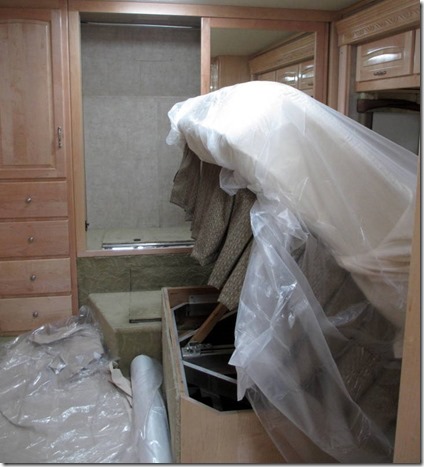

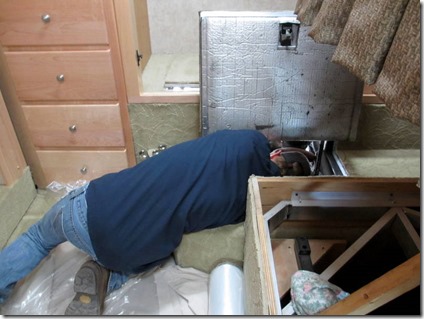
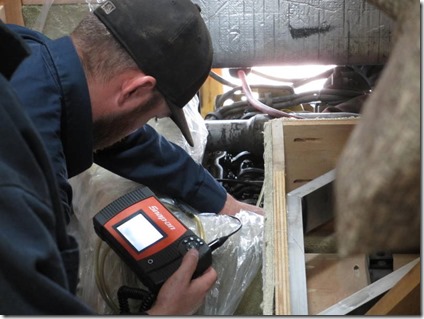
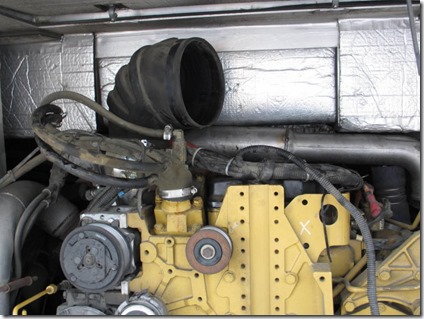
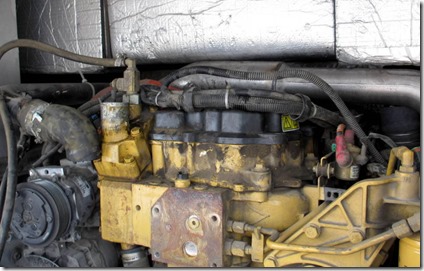

This is sounding pretty darn sucky. Makes our sitting in the rain for the next 10 days not seem so bad after all.
ReplyDeleteTEN DAYS? What's next? Frogs and swarms of locusts?
DeleteDo you know yet what caused the damage? I know some of the lubrication for diesels comes from the fuel it's self… and I always wondered if losing a fuel pump or running out of gas would cause damage. I feel your despond...
ReplyDeleteWe don't know for sure, but the current theory is that fuel injector number 6 pooped itself. Oil and fuel are sprayed by the injector. Losing the injector is very bad. Jim is learning more than he ever wanted to know about diesel engines. Tomorrow they start pulling pistons and looking for additional damage. Sigh.........
DeleteOur's is under the bed too, but I think it can be dropped. Before you decide to have the real cap cut, compare the cost of replacing it with the cost of towing the rig to a place with a pit where the motor can be dropped. When we had just a little damage to the top of the back cap the bill was over $5000. I can't imagine what removing and replacing will cost!
ReplyDeleteFingers crossed they will find a cheap solution for you.
We're now slightly optimistic that we're not going to need the short block, so there will be no cutting off the back of the bus. Oh Happy Day!
DeleteWhat a mess! But good news on not needing the short block.
ReplyDelete